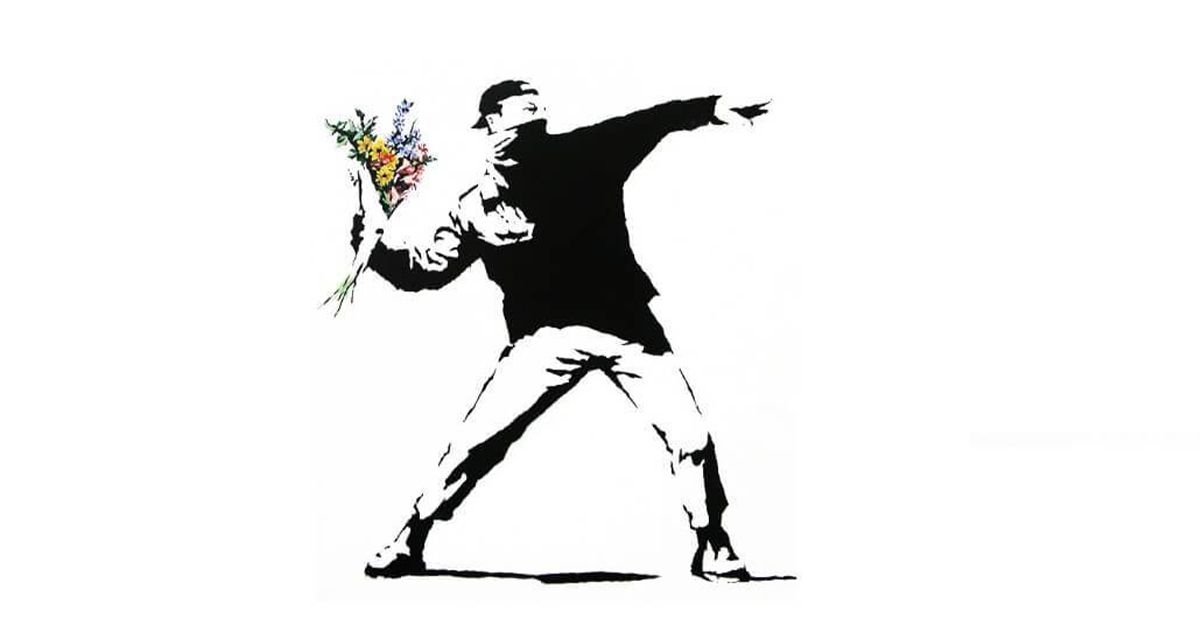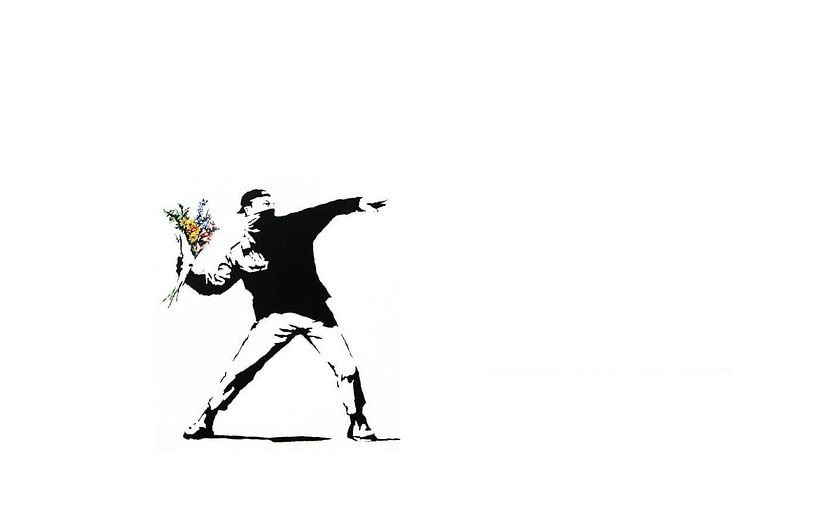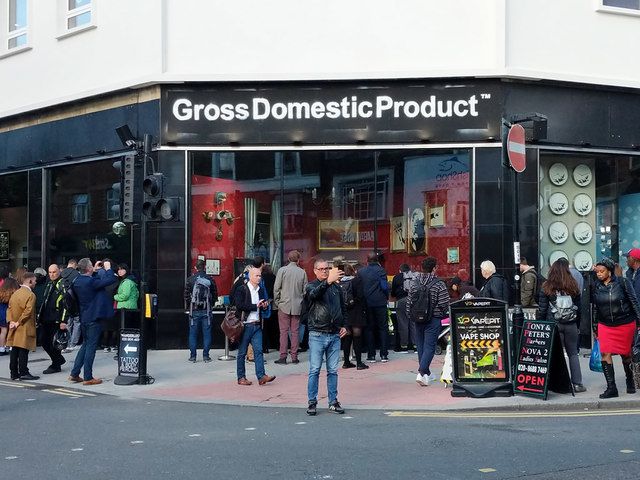The Banksy Case: How Can Anonymous Artists Legally Protect Their Work?

Find out what the Banksy case teaches us about the legal protection of anonymous artworks
You've probably heard the recent news concerning Banksy's artwork. The street artist, whose true identity remains unknown, suffered a major setback in a legal battle against a company that was selling Banksy's work without their permission.
The European Union Intellectual Property Office (EUIPO) ruled in favor of the company, raising the alarm for street artists everywhere, especially those who work anonymously. The concern is that this case could set a legal precedent. What do we know about this case? What rights do anonymous artists have? And most importantly, how can authors who do not want to reveal their identities protect their works?

Details of the Banksy case
Over a short period of time, Banksy has lost the rights to two of their most iconic works of graffiti art: “Love Is In The Air - Flower Thrower” and “Laugh Now,” both created by the artist in the first decade of the 2000s. The first, “Flower Thrower,” appeared in 2003 in Bethlehem, shortly after the West Bank barrier was built. The artist produced the second artwork in 2008 in Brighton, at the request of a local nightclub.
The works became known to the world as Banksy creations, although they were never officially signed. The artist has since recreated them anonymously for exhibitions and the art world has always recognized Bansky to be the author. Legally, however, this was not enough.
Copyright is for losers
While, for many years, the artist never seemed to mind that their drawings were being sold on posters, phone covers, and T-shirts, eventually, this changed.
In 2014, Pest Control, the studio in charge of authenticating Banksy's work, asked the intellectual property office in Bethlehem to register “Flower Thrower” as Banksy’s work. However, to do so, the British artist was told they would have to reveal their identity, which Bansky refused to do. The artist's stance on the matter was summed up by a phrase that transcended the world, which they even turned into a piece of art: "copyright is for losers".
Despite their statement, in 2018, Banksy tried to challenge the commercial use of another one of their works. This time, their studio went up against Full Colour Black, a British-based greeting card company that was using “Laugh Now” without permission.
Pest Control asked the European Union Intellectual Property Office (EUIPO) to recognize Banksy as the author of “Laugh Now.” However, after reviewing the case, the EUIPO denied this request. The EUIPO ruled in favor of Full Colour Black, who continues to sell Banksy’s images without the artist’s permission.

Why Banksy lost
The reason for this ruling, according to the organization, was partly to be consistent: for the majority of works by the elusive street artist, the EUIPO delivers the same verdict. The body also argued that, if the image was allowed to be photographed by the general public without requiring permission, then the artist did not intend to commercialize the artwork. Finally, the judgment also stated that because the artwork was created anonymously, it was impossible to know who was the real author.
Plan B
To counter the organization's latter argument, Banksy set up Gross Domestic Product, a pop-up store in Croydon in south London, to prove that they had intentions to commercialize their work. In a statement on Instagram, the artist's representatives explained, "This shop has come about as a result of legal action. A greeting cards company is trying to sieze [sic] legal custody of the name Banksy from the artist, who has been advised the best way to prevent this is to sell his own range of branded merchandise."
But Banksy’s plan backfired. In May 2021, the EUIPO reprimanded the artist for having "concocted sham efforts to try and mislead the EUIPO into believing that there was such an intent."

Other stolen Banksys
This is not the first time that the anonymous and public nature of Banksy's practice has resulted in the artist not being able to register their works as their intellectual property. In 2017, the documentary Saving Banksy delved into the problems that arise when an individual or a gallery appropriates work that was created in a public space and sells it for hundreds of thousands of dollars without the artist's permission.
The director of the documentary looked back on Banksy's Tour de San Francisco. The works he created there greatly benefited the city. However, the works quickly disappeared and were sold by people who illegally appropriated them.
Why is the Banksy case so complicated?
According to international copyright specialist Esteban Agatiello, founder of the Creativa-Abogados law firm, the real underlying problem, in this case, has to do with Banksy's refusal to reveal their identity, even confidentially.
According to the Berne Convention, signed by 178 countries, every artist has the right to own their work, even if it is created in a public space and the name of the artist does not appear on it. There are, however, some legal requirements that Banksy did not comply with and does not wish to comply with to protect their work. Any artists who wish to protect their work, whether they sign it or not, should bear in mind the following points:
How can you protect your anonymous/street art?
- You can publish the image on a website that formally belongs to you before any other site. In other words, you will need a website that is legally registered in your name. You can use proof of the date and time that you uploaded the image to the server should you have any problems. Publishing images on social media platforms can also help.
- If you want to be careful when it comes to confidentiality, you can verify the date of the creation of a work in the presence of a notary and hold on to this record privately.
- Registering a work with the Intellectual Property Office is the usual route people choose. If you do this, the author will have to reveal their identity. However, this organization is committed to protecting confidentiality. The author has the option to register their work under a pseudonym or confidentially.

Who could Banksy be?
Banksy's identity has long been the subject of speculation. Here are some theories of who the artist really is:
- Banksy is believed to be Robin Gunningham, who was born in 1973 in Yate, just 19km from Bristol, England. Two cassette sleeves featuring his artwork from 1993, for the Bristol band Mother Samosa, exist with his signature. In June 2017, DJ Goldie, who knows Banksy, accidentally referred to him as Rob.
- Another suspect is Robert Del Naja (aka 3D), a member of the trip-hop band Massive Attack. Del Naja was a graffiti artist during the 1980s before forming his band. Rumors suggested that he used to be a close friend of Banksy's, however, many believe it’s actually him.
- It is also believed that Jamie Hewlett might be Banksy. Hewlett is an English cartoonist and comic book designer known for the Tank Girl comic who also founded the virtual band Gorillaz.
- In 2020, Twitter users began speculating that former Art Attack presenter Neil Buchanan could be Banksy.
Intellectual Property Rights is a broad and fascinating subject. Any artist who wants to develop professionally will need to get to grips with the basics. Knowing these rights is part of taking care of what you create. Of course, in the end, you always have the option to choose whether you reveal your identity or not. Remaining anonymous might be crucial to your journey as an artist.
Do you want to learn more about the world of street art? Check out our Domestika street art courses and start designing your creations.
English version by @eloiseedgington.
You may also like:
- What to Do if Your Work Is Plagiarized
- What Is a Stencil and What Are the Origins of the Stenciling Technique?
- What is Contemporary Art?





0 comments